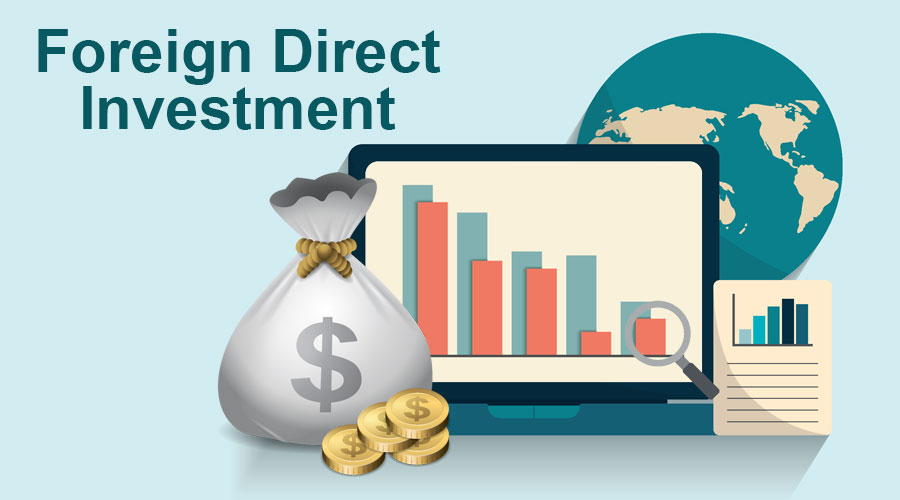Foreign direct investment or FDI is one of the most important sources of direct investment in countries. Unlike foreign portfolio investment, an investor in a country holds control of any business or organization in foreign lands receiving investment. FDI also indicates the political and socio-economic stability of a country. In this article, we will discuss about the types of FDI and foreign direct investment.
Overview of FDI
Foreign investment can be either organic or inorganic. In the case of organic investment, a foreign investor pumps in money to accelerate expansion and growth in established businesses. In the case of inorganic investment, an investment institution buys a business in its target country.
Foreign direct investment in a developing economy in India and parts of South East Asia gives a lot of boost to businesses that are in poor financial condition. The Government of India employed various measures to ensure that large-scale investment in sectors such as defense, telecom sector, PSUs and IT sector came into the country.
FDI is a non-debt financial resource, it has the potential to become a major driver for economic development in the country. With globalization and internationalization, FDI has become a reality. Whereas, according to scholarly opinion, foreign investment has been released keeping in mind the following factors:
- It aims to control companies in a foreign land.
- It has helped businesses overthrow monopoly practices.
- Considering market imperfections, such investments help companies make an impact in case of a sharp and unpredictable drop in business activity.
Types of Foreign Direct Investment
There are various types of foreign direct investment. Let us discuss its types in this segment.
- Horizontal FDI
Horizontal FDI is the first of its kind. It is checked when a business enters a foreign country through the FDI route without changing its original activities or for any other reason for its expansion. It is also one of the most common sort of FDI. An example of this type of FDI is McDonald’s investing in an Asian country to increase the number of stores in the region.
- Vertical FDI
Vertical FDI is another form of FDI. This FDI occurs when an investment is made in a company within a specific supply chain and which may or may not be related to the same industry. When vertical FDI occurs, a business invests in a foreign firm that supplies or sells products. An example of vertical FDI is if McDonald’s purchases a large-scale meat processing plant in the European country, to boost its meat supply chain in the target country.
- Conglomerate FDI
When the investment is made in two different companies of different industries, the transaction is called Conglomerate FDI. As such, FDI is not directly linked to investor business. An example would be in this case when American retailer Walmart invests in Indian automobile manufacturer Tata Motors.
- Platform FDI
Among the types of FDI, platform FDI means expansion of business in a foreign country, but everything manufactured there is exported to a third country. This form of FDI is seen in the trade-free zones of FDI-starved countries. For example- French perfume brand Chanel set up a manufacturing plant in the US and exported products to other parts of Asia and Europe.
If you want to invest through FDI, it is important to know about various types of FDI, including examples. With FDI, the money invested can be used to start a new business in a foreign land or to invest in an existing business in a foreign land.
Advantages & Disadvantages of these types of Foreign Direct Investment
FDI has its advantages as well as disadvantages. Let’s take a look at these two sides of FDI.
Advantages
- With the increase in FDI, businesses benefit through tax breaks or incentives and the ability to further diversify.
- For the country receiving FDI, benefits such as more excellent employment opportunities, access to latest technologies and modern management methods etc. can be enjoyed.
- FDI can help create a level of dependency between countries that will maintain a peaceful environment.
Disadvantages
- Large corporations take over the market, and this hurts local businesses. One of the examples is walmart.
- There is a risk of profit repatriation which means that the profit generated in India will not enter the domestic economy.
- FDI can affect a country’s exchange rates.
Conclusion
FDI has been an important driver of economic growth and also an important source of non-debt finance for India’s economic development. Therefore, there should be a robust and easily accessible FDI system. Once the epidemic ends and the economy opens up completely, analysts predict various types of foreign direct investment to flood.

